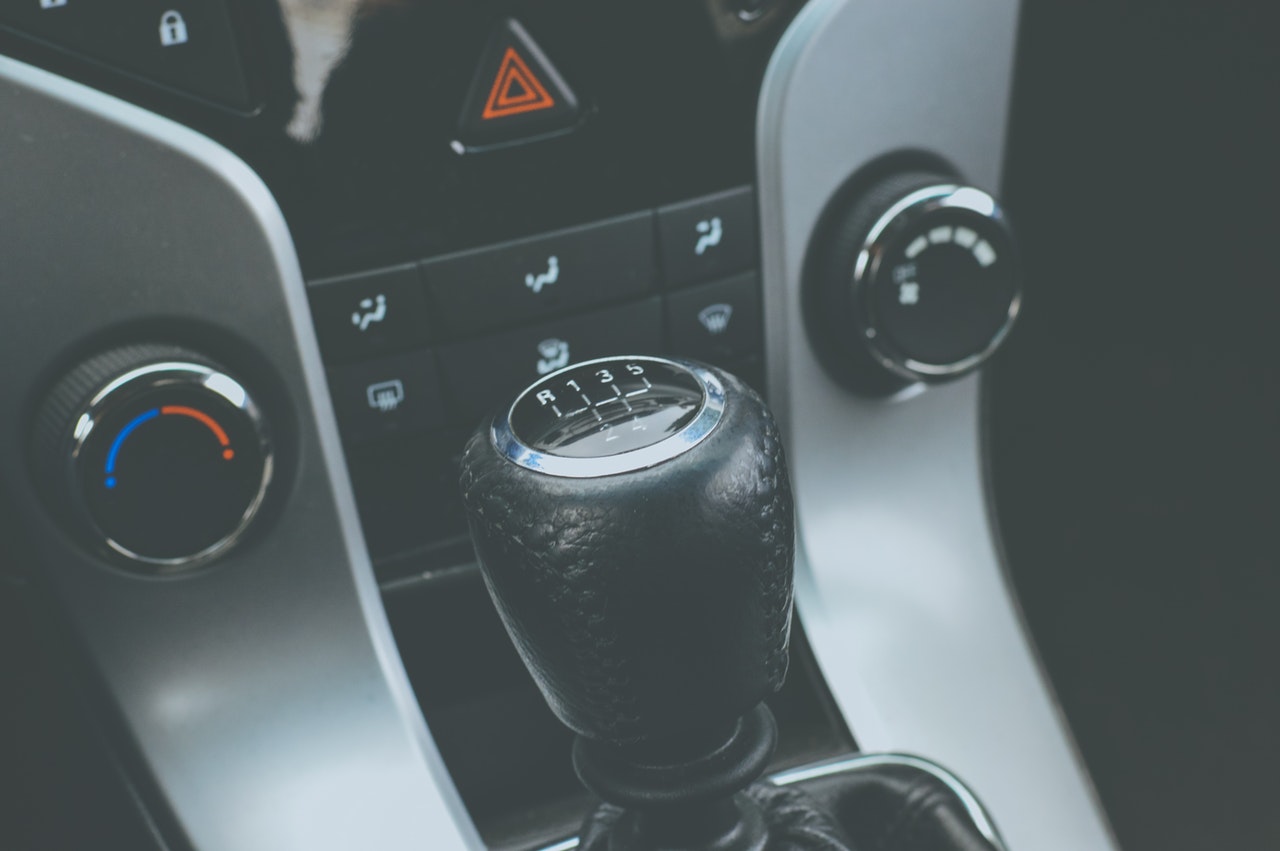Understanding Arizona Drivers License Renewal
Arizona drivers license renewal is different from what most states require. No matter your age, your
AZ drivers license is valid until you turn 50. Once that happens you must renew it and it has to be renewed every five years after that. That may sound really simple, but there’s more to the issue than just getting your license once. Keeping it up to date is important, and you have to do that in specific ways. If you fail to follow state guidelines your license won’t technically be valid, even if you don’t have to officially renew it. Here’s what you really need to know about
Arizona license renewal.
Your License is Good Until You’re 50 Years Old
Most states have set times that a license is good for, such as three years or five years. But with the State of Arizona, a driver’s license is good until the license holder turns 50. That’s true whether the license is issued when you’re 16 or when you’re 49. You won’t get a license renewal notice in the mail, so you want to make sure you’re paying attention to when the license expires. Make a note of it somewhere and be aware that you’ll need to do a few things to keep your license valid up until you turn 50, as well.
Vision Test
Even when your license isn’t up for renewal, you must have your vision tested every 12 years. You’ll need to do that at the DMV, in person, and you’ll also need to prove your identity when you come in for that test. You can show them your current driver’s license and one other document, such as a passport or a social security card. If you pass the vision test there won’t be any problem with your license, and it will continue to stay valid until you reach 50 years old. If you fail the vision test, you may need to see an eye doctor or have your license suspended or revoked.
Keeping Your Picture Updated
When you come into the DMV for your vision test, you’ll also need a new photo taken. A person’s appearance can change quite a bit in 12 years, so it’s important that you have a photo that reflects your true appearance. You can’t bring in a photo of yourself, as you must have the picture taken there at the DMV. There are special rules for this if you’re in the military and stationed far away from home, as you can get a license that states it’s valid without the photo until you can get back to the DMV in person to have your photo updated.
After 50, Your License Needs Renewed Every Five Years
Once you turn 50, the rules change. Your license will only be valid for five years, and you’ll need to renew it completely for each five-year period. You won’t be able to just have a new picture taken and take a vision test. There are fees each time you renew a license, as well, but they’re lower for people who are over 50. Those who have a suspended license will need to get it reinstated before having it renewed, and those who are getting a Travel ID will only see their license be valid for a maximum of eight years. These special circumstances and licenses must be treated the right way, and it’s well worth your time to visit the DMV if you have questions or concerns about your license or its renewal.
Can You Register a Car Online?
There are many reasons why states require people to register their cars. Part of the reason is for taxation. But other reasons include keeping track of who owns what car, figuring out the number of cars on the roadways, and ensuring the vehicles on the roads are safe. If you are looking to register a new vehicle or pay your current registration for an existing vehicle, you may wonder if this is something you can do online. The answer to this question varies based on the state you are in. Here are a couple popular states and the information you need to know about how to register a car online in these states.
New York
In New York, some registrations are eligible to be renewed online. You may be eligible to complete your renewal process online if your registration has not been expired for a year or longer, your registration is not suspended, you have insurance and you have had your vehicle inspected in the last year. If you are eligible to renew online, your registration paperwork will indicate that you can go online and make the payment. If you are not eligible, you will have to go to the New York Department of Motor Vehicles to renew your registration.
California
In California, online car registration can only be used for cars that are currently registered in California and have been within the past year. If you are looking to register a car from out of state or looking to register a car that has not been registered in over a year, you will need to go to the DMV. Additionally, online registration may not be completed if the information you need to complete the process has not been electronically submitted. This includes a smog check and your insurance papers. If you pay online without proof of either of these, you will be asked to submit them by mail or in person before your registration process can be completed. Also, be sure you have completed a driving course at an accredited driving school. If you are wondering how to register a car in California easily take a look at some more of our content.
Arizona
Unless you are looking to register a car from out of state, the answer to the question ” can I register my car online in Arizona” is yes. Your renewal slip will tell you whether you need an emissions test or not. If you do, you must obtain this test and have it electronically sent to the DMV before you can register your car. Once that information has been received, you can register your car online. Be aware that if you have outstanding tickets, you may be required to pay those before you can register your vehicle. This can also be done online, making the process easy.
Texas
Texas, of course we did not forget you. If you are wondering how to register a car in Texas there are a few ways including online, by mail or in person to a county substation. One of the unique things about Texas is that you do not even need to wait for a renewal form to register your vehicle. You can register it simply using the license plate number or VIN number when the time comes.
Florida
Florida will not allow you to register out of state vehicles or vehicles that you have just purchased online. However, if you are looking to register a vehicle that has been previously registered in your name, you can re-register it online. You can re-register your vehicle up to three months in the state of Florida as long as there is a current proof of insurance certificate meeting the state minimum on file for your vehicle.
Most states are now allowing customers the ability to pay their registration fees online, rather than having to mail them in or pay them at a DMV office. If you live in New York, Florida, Texas, California, or Arizona, you live in one of the states that allows this, making it easy to pay your vehicle registration when the time comes. Those states also make it easy for you to take traffic school online to dismiss a ticket. Great news for the super and somewhat-super computer savvy.
How Much is A Speeding Ticket in Arizona?
Speeding Tickets in Different States:
The state of Arizona makes use of several unique methods to nab speeders. Arizona drivers must be aware of stationary traffic cameras, officer radar guns, unmarked police cars and beyond. If you are pulled over for speeding, you will likely receive a fine as well as points on your driving record/license.
It is important to note that specific speeding fines differ by city and county. As an example, someone caught speeding in Flagstaff will not face the same fine as someone who is nabbed speeding in Tucson. Additionally, those who have not been caught speeding in the past will likely face less of a fine than those who have received multiple speeding tickets.
Start Your Online Course Now to Dismiss Your Ticket
The table below displays the top 5 counties Arizona drivers get caught speeding in. Traffic school prices differ based on individual court diversion fees. Take a look at the ultimate savings here:
| Maricopa |
|
|
|
|
10-14 mph |
$250 |
$203.95 – $265.95 |
|
15-19 m.p.h. |
$300 |
$203.95 – $265.95 |
|
20+ mph |
$350-$450 |
$203.95 – $265.95 |
|
Traffic Camera |
$165-$200 |
$203.95 – $265.95 |
| Cochise |
|
|
|
|
10-14 mph |
$250 |
$103.95 – $253.95 |
|
15-19 m.p.h. |
$300 |
$103.95 – $253.95 |
|
20+ mph |
$350-$450 |
$103.95 – $253.95 |
|
Traffic Camera |
$165-$200 |
$103.95 – $253.95 |
| Mohave |
|
|
|
|
10-14 mph |
$250 |
$103.95 – $228.95 |
|
15-19 m.p.h. |
$300 |
$103.95 – $228.95 |
|
20+ mph |
$350-$450 |
$103.95 – $228.95 |
|
Traffic Camera |
$165-$200 |
$103.95 – $228.95 |
| Pima |
|
|
|
|
10-14 mph |
$250 |
$103.95 – $233.95 |
|
15-19 m.p.h. |
$300 |
$103.95 – $233.95 |
|
20+ mph |
$350-$450 |
$103.95 – $233.95 |
|
Traffic Camera |
$165-$200 |
$103.95 – $233.95 |
| Pinal |
|
|
|
|
10-14 mph |
$250 |
$103.95 – $233.95 |
|
15-19 m.p.h. |
$300 |
$103.95 – $233.95 |
|
20+ mph |
$350-$450 |
$103.95 – $233.95 |
|
Traffic Camera |
$165-$200 |
$103.95 – $233.95 |
For complete list of AZ Court Diversion Fees: Click Here
Show Arizona the Money

Police officers are required to follow nuanced guidelines when determining the value of a speeding ticket. However, in some instances, the officer will consider the driver’s level of resistance/compliance when determining the cost of the speeding ticket. In other instances, the officer will follow the specific formula that determines the cost of a speeding ticket. If it is determined that you were driving more than 10 miles per hour beyond the speed limit, the financial penalty for your ticket will rise quite dramatically.
A speeding ticket for driving 10 miles per hour beyond the speed limit runs $250. This cost increases $50 for every 5 miles per hour beyond 10 miles per hour above the speed limit.
A speeding ticket for driving 20 miles per hour over the posted speed limit can be increased by $200 more than the initial $250 fee. Driving at such a fast rate of speed can also result in the suspension of the driver’s license. It is even possible for the license to be revoked when the traffic stop occurs.
The amount of the speeding ticket can be changed according to whether the driver was nabbed speeding by one of the state’s stationary traffic cameras. This style of speeding ticket is sent through the mail. It requires the driver to pay a set cost of $165 along with an additional $30 in fees and surcharges.
Show Traffic School the Money – It’s CHEAPER!

It is usually less expensive to take and pay for AZ defensive driving course, not have any points added to your driving record and avoid having your insurance rates up than to pay your ticket, have points added to your record and have your auto rates increase dramatically.
Eligibility and More

Arizona allows residents to enroll in traffic school once every 12 months. When you take the course, it will only dismiss one traffic related offense. Be sure to look up fines and points for all violations (if you received more than one) before you tell the Traffic School which offense you want the school to dismiss.
Top violations:
Speeding: 3 points
Running a red light or stop sign: 4 points
Failure to yield: 4 points
Criminal Speeding

Speeding at an excessive rate, known as “criminal speeding”, can result in upwards of 30 days in jail and a $500 fine. Additional penalties for criminal speeding include paying to have the vehicle retrieved from the space it was towed to. Criminal speeding occurs when a driver goes 85 miles per hour or more anywhere in Arizona. A driver exceeding 35 miles per hour near a school crossing can also be found guilty of criminal speeding.
A driver who exceeds the posted speed limit by 20 miles per hour in a residential or business area can also be found guilty of criminal driving. If no speed is posted in a residential or business area, one driving 45 miles per hour or more beyond the speed limit will face the possibility of a criminal speeding charge. Aside from fines and possible jail time, such a charge can also impact one’s ability to legally operate a motor vehicle.
Can I Travel with My Driver License?
One of the biggest and best benefits of having a driver’s license is the independence that it brings. Once you have acquired your driver license, you’re basically free to go wherever you please. But there are some caveats to consider. Your driver license will only get you so far. In some cases, you may have to have other documentation to travel. So, can you travel with your driver license? Yes and no.
Traveling in the United States with Your Driver License
The way that the United States is set up, you can travel anyplace you want to go with just your driver license. The U.S. doesn’t even have border restrictions between states. So, if you want to travel between Ohio and Michigan, for example, you can do so. You won’t have to stop to display your driver license at the border between Ohio and Michigan. If for some reason you’re stopped by a police office in Michigan, you can show him your Ohio driver license and that be fine. With a driver license, you’re legally entitled to drive anywhere in the United States. You will need a REAL ID, however, for traveling by plane starting October 2020.
Driving a Vehicle in the United States
Now, driving a vehicle in the United States requires different credentials, depending on where you’re driving. Even if you’ve passed a defensive driving class, there might be other rules. Depending on which state you’re driving in, you may be required to carry auto insurance. Only a handful of states allow you to drive without auto insurance. Remember, even if you’re just driving through, you may be required to show proof of auto insurance if you’re pulled over for any reason.
Traveling Abroad with Your Driver License
You won’t be able to travel abroad with just your driver license. Other countries require a passport to get in, and you’ll need your own U.S. passport to return to the United States. In addition, you might need a visa to get into some countries, in addition to your passport. Now, your driver license will help you travel abroad, though. You’ll be able to use it as proof of your identity to get your passport.
Driving Abroad with Your Driver License
Your driver license entitles you to drive in your state and throughout the U.S. It also entitles you to hire a rental car, even outside the U.S. Rental companies oversees have agreements with insurance companies that will cover drivers from other countries. But if you want to buy a car and drive it in another country, that’s another story.
You won’t be able to drive abroad with your driver license if you own the car. You’ll have to have an international driver license, in addition to an insurance policy that will cover you for the country you intend to drive in. Bottom line is: if you want to buy a car to drive in another country, be sure you can afford to pay for the insurance and any other additional license you may need. But if you just want to rent a car to drive overseas, the good news is that your U.S. driver license will probably be sufficient!
Driving a Motor-home or Trailer in the U.S.
Do you have dreams of driving a motor home across the U.S.? You may think that you can only drive one of these if you have a commercial truck license. But you’re entitled to travel in the U.S. with a motor home with only your regular driver license. If you can show proof of insurance, you’ll be able to rent a motorhome or trailer and travel throughout the entire U.S.
Do you have the defensive driving skills necessary to travel safely with your driver license? If so, you can use your driver license to travel anywhere in the U.S., and to rent vehicles while traveling abroad. Bon voyage!
What is a Space Cushion?
A space cushion. This is something they tell you about in defensive driving class. What is a space cushion? It sounds top secret. Like something, NASA and the government need to keep hidden in order to protect us from beings from outer space. That’s right. Space beings. Aliens. Martians from a distant planet, maybe Mars, who have entered our atmosphere and are looking for a way to relax. After all, space travel must be exhausting. Imagine sitting there, in your UFO spacecraft seat, for millions of miles. Completely tiring. No wonder those men from Mars need a space cushion. A place to lay down their big brainy heads for a little cat nap.
No, sorry, that’s not what a space cushion is. Although, that is a novel idea. So, what exactly is a space cushion?
What is a Space Cushion?
A space cushion is an area around your vehicle that is just empty space. No other vehicles are in that space. The space cushion area includes the space in front of, behind, and on both sides of your car.
Why Have a Space Cushion?
A space cushion gives you time and opportunity to avoid collision with another vehicle. If you don’t have a space cushion, then any sudden movements by other vehicles can catch you with no way out of the situation. In fact, with no space cushion around your vehicle, you have limited options if you yourself have a sudden emergency or a sudden movement. Consider this: Imagine you’re driving in your car, and one of your tires blows. The sudden drop in tire pressure will likely cause your vehicle to swerve dramatically to one side. You obviously won’t know which side your car will swerve on, because it came out of the blue. You could swerve right into another car, or even a pedestrian. This is why you want to have a space cushion.
How to Make a Space Cushion
First, you don’t need sewing lessons to make a space cushion. We thought we cleared up all that nonsense about aliens needing naps about two paragraphs ago. So please put away the needle and thread. And the thimble. Okay, let’s get down to the business of defensive driving by making a space cushion.
First, you want to have at least a three-second delay from the rear end of the vehicle in front of you to the front of your car. This is the easiest part of the space cushion to make. As you’re driving, pay attention to the signs on the side of the road. If you’re on the freeway, you can use the signs overhead. As the car in front passes by the sign, count to three (yes, you can use Mississippi). Your car shouldn’t pass that same sign before you’ve reached three. If it has, you’re following too closely. Slow down, Speed Racer.
Second, you want the car behind you to slow down so there’s a three-second delay between you. Now, you can’t tell that driver how to drive. But you can let that driver pass if he insists on tailgating you, (maybe he has to get to a bathroom or something. Who knows)? Anyway, just let him go by.
Finally, you don’t want any cars next to you. How do you manage this? By adjusting your speed either up or down so that you aren’t riding along with James Dean’s style in some kind of misconceived road race on the highway.
Now that you know what a space cushion in, why it’s necessary, and how to make one, you’d best be on your way. Leave plenty of time between your departure and your arrival so you’re never the one tailgating.
How to Drive in Every State
Almost every kid yearns for the day when they can be old enough to learn how to drive. Getting that driver’s license is a rite of passage that carries so much meaning. For most young drivers, learning how to drive symbolizes freedom and responsibility. It’s a giant leap away from childhood and a small step toward adulthood. Once you learn how to drive, you can go places without your parents, run errands for your parents, get a job that’s beyond walking or bicycling distance, and go on real dates. It’s an amazing time in life that happens only once.
Drivers Ed
How you learn to drive depends on where you live and what your situation is. If you go to a school where they offer Drivers Ed, you might learn how to drive with a bunch of your friends sitting in the back seat, which is simultaneously a blast and intimidating. If driving school is affordable, you might learn about defensive driving from a stranger. Your last – and sometimes preferable option – is to learn how to drive from your parents or a family friend. However, you officially learn about defensive driving, there’s probably a bunch of stuff you didn’t learn. But don’t worry. We’re here to fill in the gaps. Here’s the guide on how to drive that you’ll never hear from anyone else.
Watch Other Drivers’ Faces
When you watch driving videos, they always tell you to “look out for other cars.” But defensive driving requires more than that. You can get a whole lot of information about what a car is going to do by watching the driver’s face. Say you’re coming up on an intersection. The driver of the car at the stop sign is laughing and talking to his buddy. Every now and then his car creeps forward. He can’t wait to zip out. Does he see you coming? Keep an eye on that driver to make sure he looks at you. If he doesn’t, there’s a good chance he might pull out right in front of you. To be on the safe side, slow down or move to the next inside lane.
Don’t Double Pedal
Your right foot is for driving, and your left foot is for the clutch if you have a manual transmission. Don’t double pedal with your left foot hovering over the brake and your right foot hovering over the accelerator. This is a bad habit that can lead to a) overuse of brakes, b) an accident. Just don’t do it.
Don’t Eat in the Car
Yes, your mom’s car is full of Burger King wrappers. You grew up at the drive-thru. That’s what drive-thrus are for, right? We’ve heard it all before. But eating in the car is a bad, bad idea. First, you could choke, and trying to maneuver your car out of traffic and danger is a lot harder when you’re also trying to not choke to death. Second, if you’re eating, you’re not holding the wheel with both hands. Third, eating in the car is messy business. You’ll end up trashing your car, getting stains on your clothes and not paying attention to the task at hand, which is, ahem, driving. Eating in the car puts your life at risk. Burger King won’t tell you that, but we will.
Drive Safe!
So now that you know the real secrets to knowing how to drive, we feel confident you’re ready for adulthood. Learning how to drive is something that almost everyone hopes to accomplish one day. But do you want to know the best part of learning how to drive? It’s learning how to drive safely.
Answering common traffic school questions
Are you enrolled in traffic school and feeling a bit nervous about the expectations? If so, you are not alone. Most people experience some degree of anxiety. It is quite normal.
However, you should calm down. The goal of traffic school is to make you a safer driver. The curriculum is not set up for you to fail. Instead, quite the opposite is true. The institution wants you to comprehend the material as fully as possible. Your success is their success.
This all sounds well and good, but you also know that in the end you have to complete a certain amount of work with a passing score. Keep reading below to find out just where to turn for answers to your traffic school assignments.

Use this information to help get a passing score. Then, enjoy the safe driver record and dismissal of tickets. And, of course, do not forget the mandatory insurance discount.
I’m struggling with my online traffic school course, what should I do?
You would be surprised at how easy things can be when you use a little common sense. Just stop trying to make traffic school so difficult and all will be smooth sailing.
When things get tough, just sit back and relax. You have been a driver for some time now. The answer is probably the one that seems right to you. Use your intuition.
For example, the rules of the road exist to protect motorists and pedestrians. You already know this. So, use this knowledge to help you figure out the answers to your traffic school questions. If a choice does not help keep people safe on the road, then you can discard it.
Can I ask friends & family for help with my online traffic school?
The people around you, such as family and friends, are excellent sources of information on traffic laws. Many of them have been driving for decades and know all the rules in your state. Be sure to ask them for help when trying to complete your course.
It may be best to rely on more than one person for the answers. You will want a variety of opinions. Listen to what everyone has to say, check your course material again and then choose the best answer.
How can I use the internet as a source for answers with my traffic school online?
You should search the internet for relevant driving websites. Your state motor vehicle department will have the current rules of the road available online. Likewise, the state insurance department can provide you with information on auto insurance requirements.
Last, the state court website can explain what will happen if you break the laws while behind the wheel.
What about the instructor of the online traffic school course, can I ask them for help?
If truly stuck with nowhere to turn, then ask your instructor for help. Now, you should always be sure to have attempted to find the answer yourself first. Quite often, wayward students will skip the reading material or fail to follow instructions and then expect the instructor to bail them out.
Truly attempt the assignment before asking for the instructor to explain it to you. Doing so will make their explanation that much more comprehensible.
Traffic school success is right around the corner!
You are now prepared to complete your traffic school with flying colors. Just take things easy and you will succeed in becoming an acknowledged safe driver in your state.
Can You Test Drive for Fun?
Where would we be without the test drive?
Probably more unsatisfied customers – new owners may discover that a vehicle that looked great and had good reviews didn’t “feel right” once he or she got behind the wheel. This could lead to more buyer’s remorse and owners either changing their minds right away, or hanging onto it unhappily for years, vowing never to return to that dealer again.
Good for Sales
Either way is bad news for the salesperson, since it’s their job to find the right car for the right owner and hopefully build strong relationships that last for multiple vehicles. Making prospective buyers comfortable by letting them try before they buy goes a long way in making purchases happen.
Certainly some enjoy driving several types of vehicles before finding something that appeals to them, or spend the weekend just doing test drives – and that’s OK with most dealership employees, especially if they eventually end up making a purchase.
Good for You
Some people may even visit a dealership or dealerships with the intent of test driving only, not buying. That’s OK too. The biggest challenge for a dealership is getting people to the lot, and once they’re there, it’s potentially much easier to talk them into a super deal.
Though some lot visitors are obvious browsers, they still should be given the same attention as any other shopper even if the pay-off may come later rather than sooner. Most salespeople need to always be focusing on their numbers, and taking time for a ride with another looky-loo can sometimes cut into time helping more serious customers. But from a customer service point of view, you never know which drive will switch a tester into a buyer.
Here’s why test drives are important to the buyer and seller:
1. Buyers remain educated.
Want to learn more about a particular make or model? The best way is to give one a spin and see how it performs. It’s one thing to read the specs online, but more satisfying to feel it, and then remember the experience when it’s time for shopping.
2. One drive may not be enough.
If you’re serious about a particular auto but don’t need to rush, you can test drive multiple occasions. Try it on rainy and sunny days, in daylight or night, or even on daily errands or heavy traffic so more defensive driving skills are required. This gives you more time to learn about other costs, such as different insurance premiums or discounts.
3. It can be fun.
Even if the dealership can offer nice financing and your budget could stretch a little, you might prefer to not take on new debt right now. But testing different cars and doing your homework can still be entertaining, even if the gratification is delayed. You can also try something outside of your price range, just for the experience.
4. It encourages the salesperson to try harder.
As a consumer, you’re likely to want to work with a salesman or saleswoman who you know and trust. And someone who has been patient with your browsing habits is definitely appealing. The better salespeople can even keep an eye out for certain vehicles that may interest you.
5. You can win things.
As a way to get more people visiting, some dealerships offer no-obligation incentives for people who test drive, such as event tickets, gift cards or small appliances. The sales staff is encouraged to work their magic to convert all test drivers into buyers, but legally the promised prize is yours if you satisfy certain conditions like join a mailing list.
The Pros & Cons of Manual vs. Automatic Transmission
Most people do not consider the purchase or lease of a vehicle with a manual transmission. Also known as a “stick shift,” the manual transmission is becoming increasingly rare. However, there are some advantages to driving a vehicle equipped with a manual transmission. Let’s look at the positives and negatives of manual vs. automatic transmissions to help you select the style that is best for your particular needs and desires.
The Benefits of a Manual Transmission

One of the primary benefits of a stick shift is improved fuel economy. Most vehicles equipped with a manual transmission achieve higher mpg than vehicles with an automatic transmission. Furthermore, vehicles equipped with a stick shift tend to cost less than vehicles with an automatic. Another key advantage to owning or leasing a vehicle with a manual transmission is that it is comparably secure. If your vehicle is broken into, the odds of the thief knowing how to drive a stick shift are fairly low. A manual transmission really is an anti-theft device in and of itself.
Yet the primary motivation for selecting a vehicle with a stick is feel. Controlling the shifts between gears makes one feel as though he is a race car driver. It is a ton of fun to upshift and downshift while traversing the roads. If you get a vehicle with a manual transmission, you will likely be tempted to get to fourth or fifth gear as quickly as possible and drive at a high rate of speed. It could result in a speeding ticket. If you are nabbed speeding, enroll in defensive driving for an auto insurance discount. You can also enroll in traffic school to have your ticket dismissed or reduced.
The Drawbacks of a Manual Transmission

The main drawback of a stick shift is the learning curve. Most people do not want to invest the time and effort required to learn this style of driving. Furthermore, constantly shifting between gears is somewhat tedious. If you aren’t particularly skilled at operating a stick, you might make a mistake that leads to an accident or a traffic ticket. Those who lack coordination might find it difficult to use both arms and legs in unison on the steering wheel, stick shift, gas and clutch pedals. Another problem with the manual transmission is that few people know how to operate it. If you have one too many drinks, feel sick or are injured, the odds of someone in your group being able to operate a stick shift are low.
The Benefits of an Automatic Transmission

The beauty of an automatic transmission is that the vehicle shifts through the gears on your behalf. There is no need to divert your attention to a clutch pedal or stick shift. You can keep both hands on the steering wheel at all times and consequently, reduce the odds of an accident. Also, consider a situation in which you can’t drive your vehicle due to an injury or sickness. If you have a friend or family member with you, this individual can drive your vehicle on your behalf. Another advantage of the automatic transmission is that it makes stop-and-go traffic tolerable. The same cannot be said of a vehicle with a manual transmission that requires a constant pressing of the clutch and shifting between gears to go from a complete stop to forward movement repeatedly during heavy traffic.
The Negatives of an Automatic Transmission

Automatic transmissions cost more than the manual variety. Automatic transmissions also provide less miles per gallon than manuals as they use a torque converter to alternate between gears. Automatic transmissions typically require more maintenance than manuals due to their comparably complex engineering. Thieves are much more likely to steal a vehicle with an automatic transmission as it does not require any sort of specialized knowledge or skill to operate.
How to Choose the Right Helmet
Choosing your motorcycle helmet can almost be as important as choosing the right motorcycle. Because there are so many styles and different types of helmets to consider, we wanted to help you narrow the field! How to choose the right helmet:
Type
There are hemispherical shaped helmets that are designed to protect the head from the ears up and helmets that cover the entire head from just below the chin line. There are also helmets that look like football helmets.
Outer Shell
The outer shell is designed to absorb most of the impact in an accident, lessening the amount of force that will reach your skull. When considering the geometry of the helmet (sphere-like) any impact will be distributed throughout the helmet. In a perfect sphere, an impact (a force) will be evenly distributed. This is the case in a motorcycle helmet, except we ought to understand that the helmet is not a perfect sphere.
Liner
The next level of protection is found in the liner of the helmet. This unit of protective layer is an impact-absorbing liner. This liner will absorb residual forces not absorbed by the outer shell. While the liner is also shaped like a sphere, forces will be, ideally, distributed evenly. The material of the inner liner is usually made of Styrofoam, a material not as hard and impact resistance as the outer-liner.
Padding
The third section of a helmet is called the comfort padding. It functions as what its name indicates. It provides comfort, mainly. The comfort padding also ensures that the helmet fits snuggly on the head. A loose, or ill fitting helmet will not absorb as much of the forces as a well-fitting, snug helmet.
Retention System
The fourth component of the called the retention system, more commonly referred to as the chin strap. Obvious to many, the chin strap helps to ensure that the helmet stays on your head in the event of a crash. The other elements of the retention system are the devices that attach the chin strap to the helmet. A loose chin strip reduces the effective safety designs of the entire helmet.
DOT
Regardless of the type chosen, make sure that they are rated by the Department of Transportation (DOT). Of the four basic components, the most important element is the outer section of the helmet, called the outer shell. Modern technologies have found plastics and fiber reinforced composites that allow for high strength, light weight outer shells.
The DOT sticker and the Snell Memorial Foundation run thorough tests on motorcycle helmets for:
Impact—The helmet’s shock absorbing capacity
Penetration—The helmet’s ability to withstand the penetration a sharp object
Retention—The ability of the retention system to fastened to the helmet
Peripheral vision—The helmet’s ability to allow side vision of no less than 105 degrees on each side.
Regardless or the style of helmet or how seasoned you are as a motorcyclist (okay, biker) it is important to check your helmet for the safety features designed to protect you from breaking your head.
SAFETY
No doubt, wearing a helmet while operating or riding on a motorcycle is necessary to reduce the probability of death or life-long debilitating injuries. The National Highway Traffic Safety Administration (NHTSA) studies have determined that deadly accidents are a higher probability when helmets are not worn.
No matter how macho you want to be, wearing a helmet is the thing to do.
How Precise Is an Online Auto Loan Calculator?
If you are thinking about buying a new or used automobile, you may be looking at online auto loan calculator to determine what you can afford to pay. These types of loans will help you calculate your auto loan payments based on the amount of loan and estimated APR you think you can get on your interest rate, giving you a general idea as to how much car you can afford. But, you may have many questions about basing a loan using these types of systems. Here is some information you will need to know.
Can You Trust an Online Auto Loan Calculator?
Yes and no. An online auto loan calculator is a great way to determine approximately how much car you can afford. If a car is $10,000 and you think you can get approved at 5.9 percent APR, the auto loan calculator will tell you what your payment will be if you take the loan out for three years, four years or five years. However, in reality, your car may be slightly lower or higher than the numbers you ran, you may get a higher or lower APR, your payments may not last a full three or five years or you may not include taxes, fees and licensing into your calculations. As you may learn in
traffic school or a defensive driving course, they are a great tool but they are not perfect.
What Factors Cause the Online Auto Loan Calculator to Vary?
As was mentioned above, there are many factors that can cause the online auto loan to vary. The largest is that there is no way to determine how much money you will need to pay for taxes, fees and licensing. As such, there is no way to include this information. This can be a couple of thousands of dollars, depending on the state you live in, and is typically rolled up into your payments. This can drastically affect your monthly payment and the interest you pay.
Another factor is your down payment. You may not include your down payment into the equation when doing one of these calculators. However, it should be. It affects how much you will have to pay over the life of the loan and the interest rate.
Lastly, the features you are guessing on cause the auto loan calculator to vary. When you are using this tool, you often put in whole numbers. You may put in $20,000 for a car, but in actuality, the car may be $21,999 or $18,599. These factors can cause the amount you are shown on the calculator to vary.
How Much Do Payments Usually Change in Reality?
Payment calculators are great at giving you an estimated amount that you will pay for a car. But they don’t give you an exact amount. The exact amount can vary heavily if you over or underestimate the amount of interest you are paying on a car or the amount the car will cost. However, if your numbers are relatively close, you can expect that the payment will be within $100 of the amount you are quoted on the screen. If your estimates are extremely off, your payment can vary more than this. Talk with a dealer to get an exact number if money is your primary concern.
If you are looking to obtain an auto loan, you may play around with an online auto loan calculator to get an idea as to how much car you can afford. However, these calculators should be taken with a grain of salt. They can give you a rough estimate as to how much you can expect to pay, but they can’t give you an exact amount. There are too many variables that can change and affect your exact monthly price.
How to get a speeding ticket off your driving record
Speeding tickets tend to happen when you least expect them, and when your funds seem to be at their lowest. But there’s a much bigger danger beyond just your rapidly shrinking bank account — points on your license. Tally up enough of those points, and you may find yourself not only broke but also on the bus. But there are ways that you can get a speeding ticket wiped entirely from your record completely.
What is the best way to fight a traffic ticket?

Every state in the nation has their own way of handling speeding tickets, with some being more lenient than others. There are certain things that stay the same across the US if you plan to fight the ticket. For all states, you’ll have a chance to tell your side of the story if you feel there was a mistake made when issuing the speeding ticket. For example, if you know you were going 55 miles an hour when the officer clocked you at 65, then his radar gun or detection device may have been poorly calibrated or just plain broken. Always plead not guilty in any court of law if you intend to fight. In all states, you’ll need to fill out the proper paperwork and pay the court fees to get your record and plead your case.

When you argue your case in either a conference or a court, you need to know the regulations that will help you win. For example, radar units are supposed to be calibrated before every shift, and before and after an officer uses it to clock a speed. These types of stringent requirements are difficult to follow for a busy speed trap, so you may be more in luck than you think. Evidence like camera footage may help you prove that the light was yellow by the time you crossed into the intersection. The court will consider your past driving records to help make their decision, so highlight any good behavior on the road too. You also can hire a lawyer who may be able to use their skills and expertise to get your ticket completely cleared for your record too.
What are the benefits of taking online traffic school?

Traffic school is offered in most states as a way to clear your record. Depending on the severity of your offense, it may be mandated that you take these classes. Typically, you’ll want to plead guilty if you intend to take the classes, but you don’t have to. For example, in California, you can still fight the ticket and potentially have the option to take traffic school if a judge allows it. However, the judge does not have to justify their decision to you if they don’t allow you to take driving school, so bear this in mind if you’re weighing your options.

If you live in the states of Arizona, Florida, California or Texas, you can have the ticket dismissed entirely if you take traffic school. If you live in New York state, traffic school will take up to 4 points off your license. Arizona, Florida, and Texas will only allow you to take the traffic school option once a year. In California and New York, it’s up to 18 months. You should have had only one moving violation, and it must be for a speeding ticket as opposed to reckless driving to get the points removed. Another major bonus in taking traffic school is that you may be able to reduce the cost of your insurance as well as get the points removed.
How Old Is Arizona in Comparison to the Other States?
Technically the Earth is about 4.5 billion years old, so Arizona has been around for quite a while. But the space on the map didn’t technically become official until 1912. If fact, it recently had a birthday in February. We’re not certain if households across the state lit 105 birthday candles for it, but we also can’t speak for what people choose to do in their own homes. How old is Arizona? How does this birthday stack up to the other states? Find out more about the history, the dates, and the reason why Arizona is so darn young.
Other States
The oldest state is technically Delaware, which became a state in 1787. Though the originally 13 colonies were established around the same time. Of course, that’s where our country started, way out there in the East. But states in the south followed pretty quickly. Georgia became a state in 1788, which is a pretty fast takeover for a country that was still trying to get its legs under it.
It took a little while to cross over to different territories, but there was a major upswing in terms of land mass for many years afterward. Ohio was established in 1803, while Minnesota was first named a state in 1858. But it wasn’t necessarily a purely east to west venture. Oregon became a state in 1859. So really, when you think about it, Arizona is kind of like the 19-year-old at a party who’s sure that 25 is the end of the line when it comes to youth.
So, What Happened?
Knowing the state’s history is the key to knowing why Arizona is such a novice when it comes to survival. It was the very last state to be admitted into the union before the outliers Alaska and Hawaii. But there’s a reason for this: Arizona was a part of the US land holdings, it was just under a different name and didn’t have state privileges. Arizona used to be a part of the territory of New Mexico, before it became a separate territory in 1863. History is still unsure exactly what the name even means. Some people say it’s from a phrase about oaks while others say it’s about spring. Both features seem uncharacteristic of the dry and extremely hot spot in the US, but to each their own.
It seems like Arizona may not even have become a state if not for a little change in 1854. The discovery of copper was really the main reason why the territory of Arizona separated from New Mexico (which didn’t even achieve statehood until just before Arizona did in January of 1912.) It’s possible that New Mexico was thinking it just didn’t need all that money coming from copper, but it’s more likely that certain people wanted to capitalize on the valuable resource. It was the industry everyone wanted to be in until about 60 years ago. Once WWII ended and air conditioners became more common, making it much easier to move to the dessert areas, and the population started to boom in Phoenix. It blossomed so much, that currently Phoenix is one of the top cities issuing traffic tickets which are only dismiss-able by taking traffic school.
So, What’s Next?
Arizona has some spectacular scenery that’s much older than the state itself. Between the people, the places and the weather here, Arizona may not have been the first state in the nation, but it will likely age just as well (if not better) than the rest of the states.
How to Get Traffic Ticket Reduced
Traffic tickets are not welcome no matter why you get them, and they will always pose the receiver with a dilemma: to pay, to ignore, or to fight? A ticket can translate to potential points on your license which can increase your chances of having your license taken away. It can even interfere with your job if you get too many of them. And they’re not cheap. Just one ticket in California can run you more than $230.00 if you’re caught going 15 miles over the limit. Most people will go to traffic school to stop the points from going on their driving record, however, getting your traffic ticket reduced is an option. It normally starts with the date on your ticket.
Show Up – In Person

It’s possible that you could defend your ticket in writing, but it’s not always offered and not necessarily recommended. It’s much easier for an official to ignore or skim a written request than it is when a person makes the effort to defend themselves in the flesh. Plus, if you write to contest the ticket and lose, you generally can’t appeal the decision. Depending on where you live, you may have a traffic court date or potentially a settlement conference to attend to start the process. Taking the time off from work may be a hassle, but if you the costs are high or if you feel like the officer made an error, then it may be worth it. A conference will be a good time to determine if there’s a way to get the ticket knocked down to something a little easier on your record.
Going to Trial
Trials will eat up your time and money with court dates and fees, but again, a trial may be what keeps you from having a major black mark on your driving record. Sometimes the officer won’t show up, in which case you win by default. You may have to do some research on the officer who gave you the ticket (e.g., when their radar gun was last calibrated, etc.) in addition to having your own arguments. You can also hire a lawyer to fight it for you. Those that specialize in traffic tickets may have more of a chance to get your ticket reduced to a minor parking violation. Lawyer rates vary though, so do some research before going this route. Your case will be a civil case, so the evidence will be about witnesses, statements, and physical evidence (e.g., camera footage.)
Mitigation

Mitigation is a way for you to admit fault, but explain the circumstances. For many, this will become an exercise in their negotiation and people skills, but sometimes it’s not even taken into consideration. There are certain judges out there who will reduce a $120 traffic ticket by $30 and extend the deadline — without even asking you to make a case. But most of the time, if you have a good driving record and a decent story, you’ll probably see some leniency after giving the details. Whatever deal is offered up is ultimately yours to either take or appeal, but you would need to do so with extreme caution. Any potential sign of disrespect to either the judge or law enforcement in general is not going to be appreciated. (We’re sure you’re surprised.)
Alternatives
Each state is different when it comes to alternatives for reducing a traffic ticket, so check into the specifics for all the above. Some states will allow you to take traffic school or a defensive driving course to avoid the points and some states will let you wipe the ticket entirely if you keep your driving record clear for a full year. Regardless of where you live though, there are ways to reduce your traffic ticket if you know where to look.
What Information is on my Driving Record and Who Can See it?
Your driving record can have a major impact on your life. It affects your auto insurance rates, can affect your ability to get a job driving, and can even impact whether a police officer gives you a ticket or not. Unfortunately, most people do not know a lot about their driving record. Here are some of the questions you may have about that important piece of paper and the answers to these questions.
Who Can See My Driving Record?

Your driving record is public record. As such, anyone who requests to see your driving record has access to it. However, most often, your insurance company, a potential employer, a current employer you do driving work for, and law enforcement request copies of and look at your driving record.
What Type of Information is on a Driving Record?

Your driving record contains information about your past driving offenses. This includes traffic infractions, accidents and criminal driving offenses, such as driving under the influence charges. Your record will also detail how many points are on your driving record. Every state uses a point system based on the severity of an infraction you received. For example, if you ran a stop sign, you may get one point on your record, whereas an accident you were at fault for is two points. If you reach a certain point level, your license may be suspended. Additionally, depending on the state you reside in, your driving record may also include the age in which you became licensed to drive, if your license has ever been suspended and for what reason, and any cars that are registered to you.
How long do DMV points stay on your driving record?

Your driving record lists how many points you have. This may lead you to wonder how long points stay on your record. Unfortunately, there is not a one-size-fits all answer to this question. The answer varies based on the state you reside in. In most states, accidents and tickets stay on your record for three to five years, but can stay on as long as seven years in some places. Criminal traffic infractions can stay on your record for anywhere from seven to ten years. Also, some states allow you to remove points by attending traffic school. The number of points you can remove is typically one or two points every two to three years. However, not every state allows this. Always check laws in your state to find out how their point system works and how long points stay on your record. Usually some form of traffic school or defensive driving course will take off or hide multiple points from one’s record.
Do driving records from different state look the same?

Driving records from all states look very similar but they do not look identical. As was mentioned above, the rules for points and how long infractions stay on your record varies from state to state. As such, the records themselves vary. It is also important to note that the records a law enforcement agency can view are different than the ones that are public record that insurance companies and employers view. A law enforcement agent can see your entire driving record. Many take a good look at this information when deciding whether to let you off with a warning or a ticket.
Your driving record can have an impact on your life. As such, it is always wise to take the time to learn about this topic. This can help you to better understand what a driving record is, who sees it, what is on it and how that information is used.
How To Access Your Driving Record
At some point in time, you may find yourself needing to access your driving record, in order to submit to a court, employer, or for any other purpose. Here are some helpful steps for requesting your driving record for some of our most popular states: California, New York, Texas, Florida, and Arizona.
California

You can request an online unofficial copy of your driving record directly from the California DMV website for a $2 fee. You would first need to be a certified user of the DMV website by registering online. You can do this through this link: https://www.dmv.ca.gov/FIM/sps/uscfed/usc/self/account/create . Once your California DMV user account is set up, you can go to this link https://www.dmv.ca.gov/portal/dmv/detail/online/dr to request your unofficial online driving record. Please make sure that you have a printer ready and that it is in working order, so you can print out the driving record when it opens, as you will only have one opportunity to print out your record after the fee has been paid. If not, you will need to repay the fee to access the record again.
Please note that if you need an official driving record document, you will need to fill out an INF 1125 document (PDF accessible on the link provided above) and mail it in to the DMV Headquarters. The address is listed on the form.
New York

For New York, you can request an official certified DMV driving record (abstract) online, by mail, or in person at a DMV location. In order to request your driving record online, you must first register for a New York DMV account. You can sign up by going to this link: https://my.dmv.ny.gov/crm/?register=T . Please note that you must have your most recent driver’s license / learner’s permit / non-driver ID information available in order to register. Once your account is set up, you may request the driving record through the MyDMV site. The fee for the online driving record is $7. Once you order the driving record, you will be able to access it to download to your computer and print it up until 11:59 PM the following day.
If you would like to request your driving record by mail, you would need to fill out a MV-15 form “Request for DMV Records,” accessible through this link: https://dmv.ny.gov/dmv-records/get-my-own-driving-record-abstract and mail it, along with a photo copy of your proof of identity, and a personal check or money order for $10.00 payable to “Commissioner of Motor Vehicles” and mail it to MV-15 Processing, NYS Department of Motor Vehicles, 6 Empire State Plaza, Albany, NY 12228.
If you would like to request your driving record in-person at a DMV location, you would just need to fill out an MV-15 form “Request for DMV Records” (accessible through the above link) and bring proof of your identity and $10.00 for the fee.
Texas

For Texas, you can order a copy of your driving record online or through the mail. You can access it online through the Texas Department of Public Safety website https://www.dps.texas.gov/DriverLicense/driverrecords.htm . You will need the following information to access your driving record: your Texas driver’s license, your current DPS audit number, date of birth, last 4 digits of your social security number, credit card (for payment), adobe PDF reader, access to a working printer, and an understanding of the type of driving record that you need. Here are the different types of driving records available: Type 1 – Status Record, Type 2 – 3 year history, Type 2A – Certified 3 year history, Type 3 – List of all crashes and violations, Type 3A – Certified list of all crashes and violations, Type AR – Certified abstract of complete driving record.
If you would like to request your driving record by mail, follow the directions on the Driver Record Request Form (PDF), which is available on the link provided above.
Florida

For Florida, you have two options to request your driving record. You are able to request a copy of your driver’s license in person at a Driver License office, a tax collector, a court clerk, or from a private vendor or you can request it by mail.
In order to request a copy of your driving record by mail, you would need to fill out a Driver License Request Form, which can be accessed through this link: http://www.flhsmv.gov/ddl/abstract.html and provide the appropriate fee, which is $8 for a 3 year record and $10 for a 7 year record. You will need the following information, in order to request your driving record: full name, birth date, social security number, Florida Driver License number, and the address where to send the record. Send the form and payment to Bureau of Records, P.O. Box 5775, Tallahassee, Florida, 32314-5775. Please note that it may take up to two weeks for your request to be processed.
Arizona

For Arizona, requesting your driving record is very easy online. You would go to the following link: https://servicearizona.com/webapp/citizenMVR/begin.do Then, you would want to provide your personal information, pay the fee, and then download and print your Driver License Motor Vehicle Record results. You must have the following information available to access the record: Arizona driver’s license number, birth date, last four digits of your social security number, and a major credit card for payment. Please note that you should have your printer ready to print out the driving record.

























 Live Chat
Live Chat



